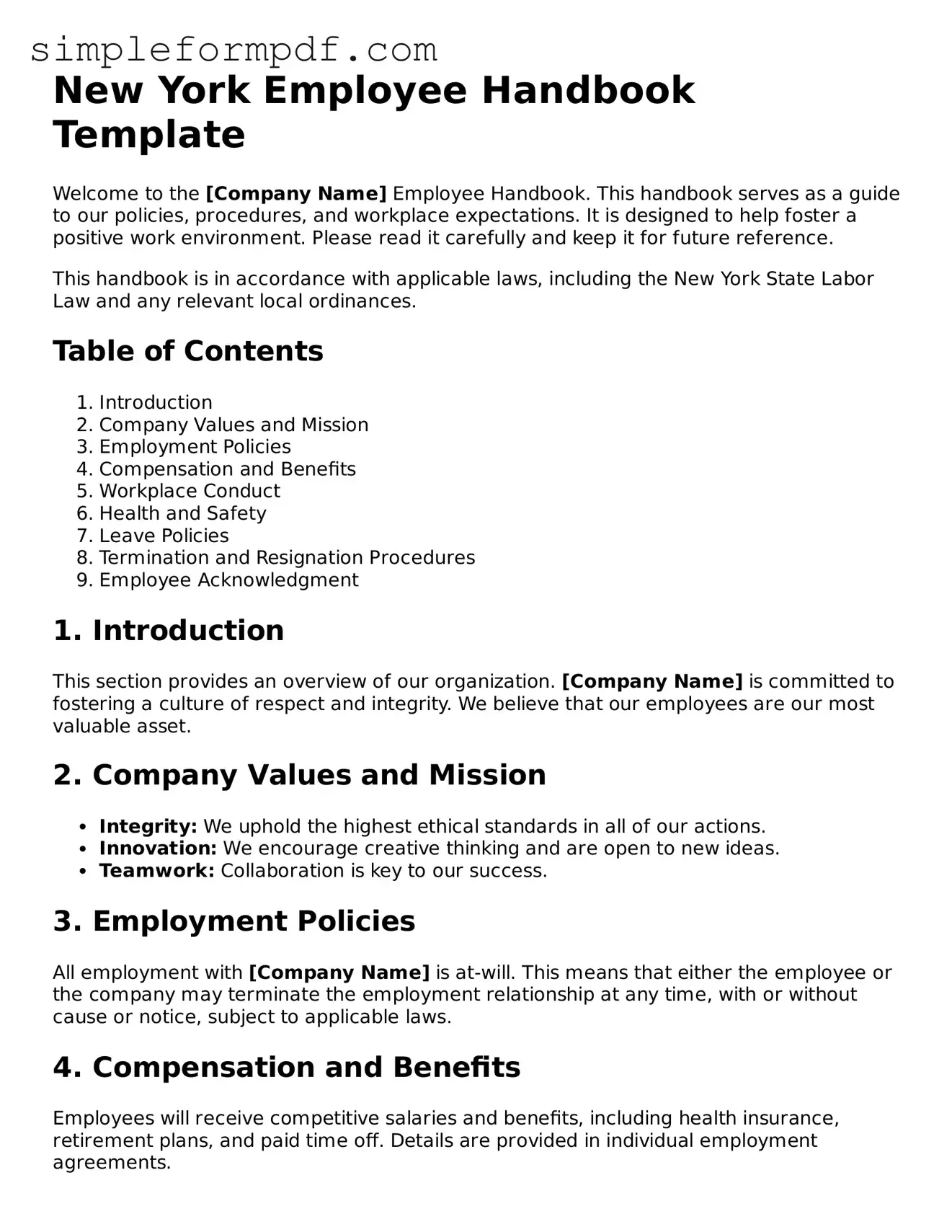New York Employee Handbook Template
Welcome to the [Company Name] Employee Handbook. This handbook serves as a guide to our policies, procedures, and workplace expectations. It is designed to help foster a positive work environment. Please read it carefully and keep it for future reference.
This handbook is in accordance with applicable laws, including the New York State Labor Law and any relevant local ordinances.
Table of Contents
- Introduction
- Company Values and Mission
- Employment Policies
- Compensation and Benefits
- Workplace Conduct
- Health and Safety
- Leave Policies
- Termination and Resignation Procedures
- Employee Acknowledgment
1. Introduction
This section provides an overview of our organization. [Company Name] is committed to fostering a culture of respect and integrity. We believe that our employees are our most valuable asset.
2. Company Values and Mission
- Integrity: We uphold the highest ethical standards in all of our actions.
- Innovation: We encourage creative thinking and are open to new ideas.
- Teamwork: Collaboration is key to our success.
3. Employment Policies
All employment with [Company Name] is at-will. This means that either the employee or the company may terminate the employment relationship at any time, with or without cause or notice, subject to applicable laws.
4. Compensation and Benefits
Employees will receive competitive salaries and benefits, including health insurance, retirement plans, and paid time off. Details are provided in individual employment agreements.
5. Workplace Conduct
All employees are expected to conduct themselves in a professional manner. This includes:
- Respecting colleagues and management.
- Adhering to dress code policies.
- Refraining from harassment and discrimination in the workplace.
6. Health and Safety
[Company Name] prioritizes the health and safety of its employees. Regular safety training will be conducted, and employees are encouraged to report unsafe working conditions without fear of retaliation.
7. Leave Policies
Employees may be eligible for various types of leave, including:
- Family and Medical Leave.
- Sick Leave.
- Vacation Leave.
8. Termination and Resignation Procedures
In the event that an employee decides to resign, a written notice is requested at least two weeks in advance. Additionally, [Company Name] reserves the right to terminate employment for reasons that comply with state and federal laws.
9. Employee Acknowledgment
By signing below, you acknowledge that you have received and read the [Company Name] Employee Handbook and agree to abide by its policies.
Employee Name: [_______________________________]
Signature: [_______________________________]
Date: [_______________________________]
